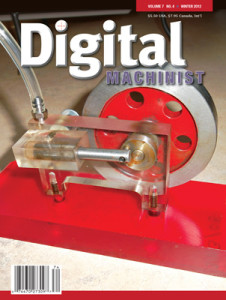Digital Machinist Book review Winter 2012
At both the 2011 and 2012 CNC Workshops we were fortunate to have Ben Fleming in attendance with a couple of his EDM’s. The design and function of Mr. Fleming’s EDM is so elegant that it’s tough to resist—judging by what I saw at the Workshops I would say that Mr. Fleming’s new design (pulse) is a success. The burns were very stable and I was impressed with the level of detail and the finish achieved. The results were just as good as the commercial machines I have run.
Ben has included all of the construction information in his newest book—. For the less than electronically fluent, the author keeps the text and diagrams basic and understandably. Beyond the basics of how to put the EDM together the author includes several chapters on actually running the machine. As you have likely gathered by now I really have enjoyed Ben Fleming’s book (and they)—will have a permanent place on my workshop bookshelf. Having seen the machine in action, I know for a fact that it works, and works very well. By George Bullis Editor Digital Machinist (magazine)
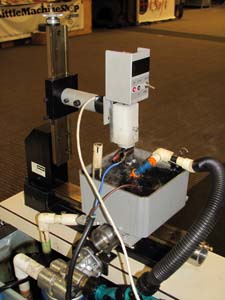
Digital Machinist CNC Workshop 2011
The second annual Digital Machinist CNC Workshop proved to be a hit, with 154 people attending. —- One crowd pleasing exhibit was Ben Fleming’s homebuilt EDM. Ben’s talks on his EDM were also enjoyed by many and a number of people left with plans for their own.
Snailworks EDM machine
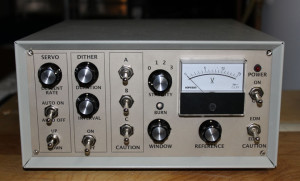
From the Snailworks Blog web site comes this BEAUTIFUL machine (photo right). This build is based on the work of Ben Fleming, whose book; The EDM How-To Book was instrumental. I met Ben at the 2011 CNC Workshop, where he was demonstrating his machines. While there, I read his book and bought a PC board that he sells to implement his RC type EDM machine. … Ben has been working on a pulse machine —– which he demonstrated at the show. After talking to him about his experience though, he said that the higher quality of available electrodes now allow them to wear much slower than before, and if you don’t mind it taking a little longer, the simplicity and capabilities of RC machines has much to recommended their use.
Model Engineering News, December 2006
The bottom line is, the Model Engine News gave a GREAT review, concluding
“I’ll give The EDM How-To Book a Gold Star and a Koala Stamp: recommended!”
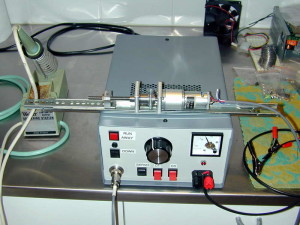
The EDM shown in the photo to the right was built by Model Engine News. My deHavilland Cirrus Mk I project had been ten years in the making—on and off, admittedly. I experienced “the dreaded broken tap in the very last hole” of the project. Initially, I considered building the quickest and dirtiest unit that could conceivably do the job. Then a Model Engine News reader suggested I look at a slightly more complex design detailed in a book by Ben Fleming. … An email to the designer [Ben Fleming] obtained a copy of his book for review and evaluation, but even before the book arrived, it seem clearly evident from photos of completed machine on the Yahoo EDM group dedicated to this machine that it had the edge over all the others I’d seen published for a number of reasons: The electronics are simple and do not rely on stepper motors, The ram mechanics are far simpler, yet far better than all of the other home-construction designs I’ve seen published … So—at long last—we come to this month’s book review: The EDM How-To Book . The photographic evidence in the book suggests that the capabilities of a machine built to the provided plans will be a useful workshop accessory. The writing is clear and the drawings should be easily followed by any model engineer. The instructions for building the mechanics are less detailed than those for the electronics, but adequate and most builders will employ some variation to suite their set-up. The book describes the importance of adequate electrolyte circulation and how to construct a suitable setup from readily available parts. The “electrolyte” may be a specially formulated hydrocarbon based fluid, or kerosene if you can’t get that.
There seems to be a perverse tendency in the EDM construction articles to concentrate on the construction and skimp on the application. The EDM How-To Book is a welcome exception to this failing. A chapter gives all the steps in setting up for your first burn, describing not only What, but Why. It then goes into alternate and advanced types of electrode and flushing, stressing the importance of the latter. Other authors should take note. With the copper electrode equally carefully squared and aligned, the tank was filled and the bacon fried. Result: perfect! The tap is gone and the 4-40 thread is completely undamaged, even when viewed under magnification.
Ollie’s EDM
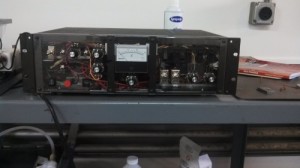
My husband Ollie decided to build an Electric Discharge Machine. 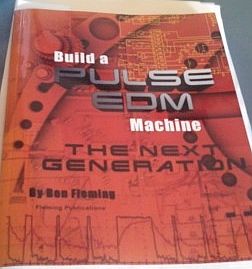
This book by Ben Fleming is really well written and has great schematics and explanations for how the circuitry works.
If you’ve ever had to trace a circuit with a highlighter and a red pen in order to analyze how a circuit is supposed to work, the explanations are appreciated. There’s a lot going on in this project with high voltages, indicator dials, AC, DC and signals. Ollie’s EDM machine is coming out really well. We used the scope to see how fast the spark was across the gap—. Altogether, a very impressive project!

